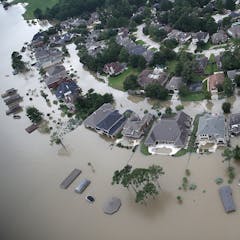
Artículos sobre Statistics
Mostrando 41 - 60 de 253 artículos

Data science infrastructure is sorely needed in many places. Doctors Without Borders brings medical help to nations in need, but similar efforts are relatively small for statistics.

Researchers found the letters X, Y, and Z make tweets more shareable. The nonsensical result shows how easily statistics can be misused.

New research calls into question the validity of ‘Dunbar’s number’.

Flood plain statistics can be confusing. There are better ways to think about the risk of severe weather than 100-year storm or flood.

One in a million or one in ten? Mathematics can help us work out the odds of whether recent sightings of UFOs are really alien spaceships.

Record-keepers have a pretty good sense of how many people have died. But figuring out the cause of those deaths is a lot trickier – and that’s why reasonable modelers can disagree.

Many governments, including the US, already collect and make public population statistics that could help them prepare for the next pandemic.

We used probability to find out what collecting all 678 stickers might cost you.

The claim that our brain size limits us to 150 meaningful friendships has been challenged by a recent paper.

Understanding numbers in the news or social media can empower you to figure out risks and make good choices. Here’s what to look out for to make sure you aren’t misled by COVID-19 coverage.

A long-sought crack in the Standard Model of particle physics may have been spotted.

It’s important to get the figures right to know if we are truely out of any recession, or if we need further stimulus to help get more people into work.

We are repeatedly missing opportunities to gain quality evidence to help us manage the pandemic – that’s why we need designed evaluations.

Smart people can have really bad ideas – like selectively breeding human beings to improve the species. Put into practice, Galton’s concept proved discriminatory, damaging, even deadly.

West Virginia’s success holds some important lessons for other states and the rest of the COVID-19 vaccine rollout.

Whether you are predicting the outcome of an election or studying how effective a new drug is, there will always be some uncertainty. A margin of error is how statisticians measure that uncertainty.

The coronavirus vaccine was developed faster than any vaccine in history. It took just 332 days from the first sequencing of the virus genome to the first vaccines given to the public.

There have been some shockingly bad graphs circulating during the pandemic.

After more than a month of testing without a single positive case, the probability of coronavirus lurking in Victoria is vanishingly small.

Asking these four questions can help us identify good news when we see it, be more critical of news reports, or delay our judgement until we have more information.
